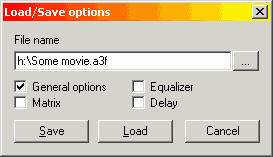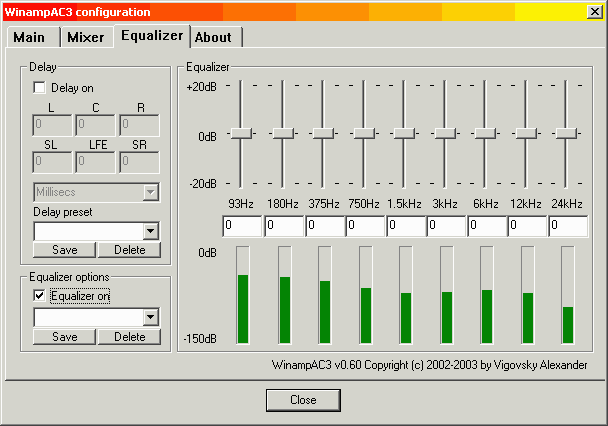WinampAC3 ver 0.60b |
| Download | Sourceforge project | Project forum | Author's homepage |




| Abbreviation |
Meaning |
| L |
Left front |
| C |
Center |
| R |
Right front |
| SL |
Left surround |
| SR |
Right surround |
| LFE |
LFE channel or subwoofer |
| Value | Meaning |
| 0 1 2 3 4 5 6 7 8 9 10 11 12 13 14 15 |
2/0 (stereo) 1/0 (mono) 2/0 (stereo) 3/0 2/1 3/1 2/2 (quadro) 3/2 2/0+SW 1/0+SW 2/0+SW 3/0+SW 2/1+SW 3/1+SW 2/2+SW 3/2+SW (5.1) |
| Value |
Meaning |
| 0 1 2 |
No Dolby downmix Dolby Surround/ProLogic Dolby ProLogicII |
| Value | Meaning |
| 0 1 2 3 |
PCM 16bit PCM 24bit PCM 32bit PCM float |
| Copyright (c) 2002-2003
by Alexander Vigovsky. |
Last updated 02.09.2003 |